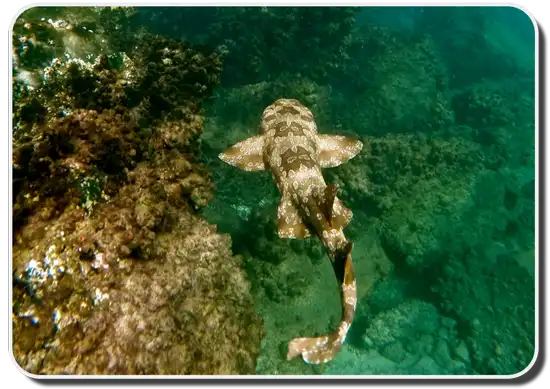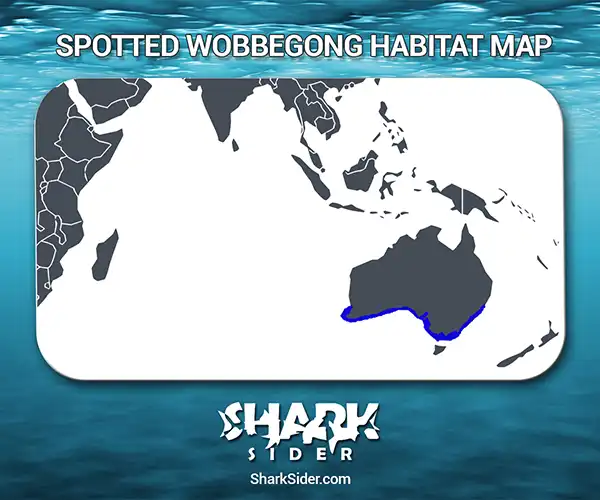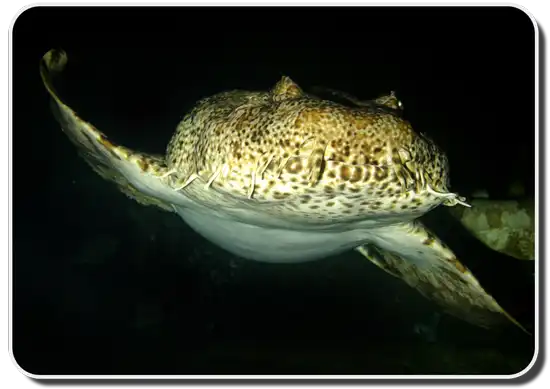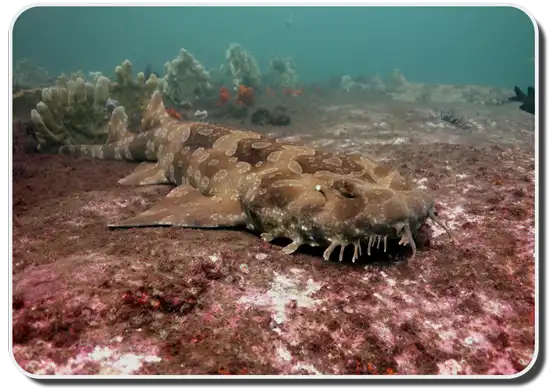The spotted wobbegong is a nocturnal hunter, remaining hidden on the ocean floor, patiently waiting for its next meal and quickly striking at the opportune moment.

Spotted Wobbegong Scientific Classification |
|
| Kingdom | Animalia |
| Phylum | Chordata |
| Class | Chondrichthyes |
| Order | Orectolobiformes |
| Family | Orectolobidae |
| Genus | Orectolobus |
| Scientific Name | O. maculatus |
Description
Generally, spotted wobbegongs are around 59–71 inches long but can reach lengths of 130 inches. This shark has a robust build, becoming slimmer beyond its pelvic fins. There are 8-10 distinct dermal lobes and nasal barbells around this wobbegong’s mouth.
These sharks can be brown, green, or yellow, with O-shaped spots all over their bodies.
Where do they live
Map Of The Spotted Wobbegong Shark’s Habitat

Spotted wobbegongs are endemic to the coasts around Australia, most notably in Queensland, South Australia, Victoria, and Western Australia. They have been spotted from the intertidal zone down to 715 ft under piers, in areas around reefs, and on the sandy ocean floor.
Behavior
Hunting
The diet of this shark consists of fish like bass, parore, rays, and scorpionfish, as well as invertebrates like crabs, lobsters, and octopi. These wobbegongs will camouflage themselves in the sand on the ocean floor, lying in wait for any potential prey passing by, and then suck them up. Sometimes prey will come up to the camouflaged shark in an attempt to feed on its lobes.
Social
Spotted wobbegongs associate in groups, although the exact reason remains unknown. However, specific individuals do not associate with other wobbegongs.

Reproductive
Female spotted wobbegongs give live birth in the spring to a litter of 20 -37 pups. Newborn sharks are 9 inches long and become sexually mature at around 24 inches.
Adaptations
To help this species of wobbegong suck its prey more efficiently, it has developed a small mouth but a broad pharynx.
Interactions with humans
 While usually docile, there have been documented cases where the spotted wobbegong has attacked people. This is mainly a form of self-defense if stepped on, but sometimes a dangling limb is mistaken by them as a potential food source.
While usually docile, there have been documented cases where the spotted wobbegong has attacked people. This is mainly a form of self-defense if stepped on, but sometimes a dangling limb is mistaken by them as a potential food source.
The IUCN lists the spotted wobbegong as “Least Concern” or “LC” as they are currently not at risk of extinction.
